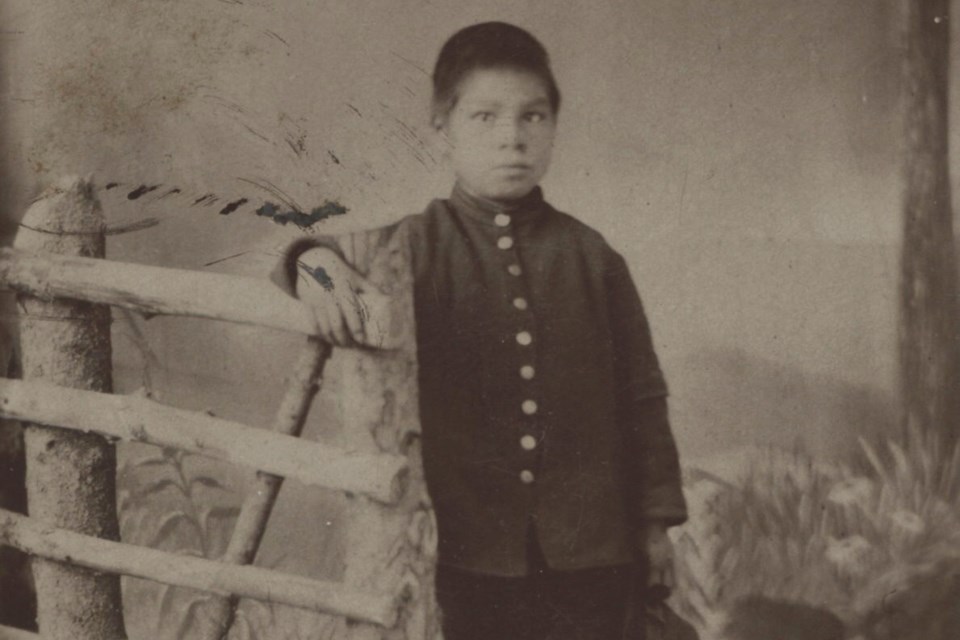Sault Mayor Christian Provenzano was planning to introduce an Indigenous land acknowledgment as soon as face-to-face City Council meetings were once again allowed.
But last week's news that remains of 215 children had been found at a former residential school in Kamloops, B.C. convinced the mayor that he needed to move faster.
"I don't think I should wait any longer," Provenzano said as he launched what he said will become a regular feature at City Council until the end of this term.
The following is a full transcript of the mayor's remarks:
Before we call the meeting to order, I wanted to take a moment to recognize the terrible news that we've all received recently, of the 215 children that were found on the former Kamloops Indian Residential School site.
We have our own history here in Algoma, in Sault Ste. Marie, with the Wawanosh Home for Girls and the Shingwauk residential school.
There's a very heartening tribute at Algoma University in honour of the 215 children that we've been told have been found at the Kamloops residential school site.
I wanted just to tell the community that the city is flying its flags at half-mast... and will continue to fly those flags at half-mast for 215 hours to 7 a.m. on June 8.
You will notice that I am and city councillors are and staff is wearing orange ribbons in commemoration and I want to to recognize the terrible truth of the Canadian residential school system – our deepest condolences to all of our First Nations brothers and sisters, Garden River First Nation and Batchewana First Nation, and our urban indigenous population.
Before we begin the meeting, I wanted to take a moment of silence and honour and respect for the lives lost, and I'd ask that we do that now for one moment.
[89 SECONDS OF SILENCE]
The magnitude of the revelation that there is a mass grave at the Kamloops Indian Residential School, is a demonstration of the historic pain and suffering that Canada's First Nation peoples have been subjected to by our history.
There's very little that any of us can do to rectify that.
But what we can begin to do is to acknowledge the truths, acknowledge how what we've done has impacted our First Nation communities, our First Nation friends, how that trauma is generational and how it impacts them to this day.
One of the things that we can do is acknowledge the truths, recognize them.
And another thing we can do is listen.
We are trying our best to do that, but it's evident that we have a lot more work to do.
In some of our efforts we meet regularly with First Nation leaders in our community and we have have established a Bawating advisory circle where we talk about community issues.
One of the things that was suggested to me at that circle was that it would be positive to do a land recognition at the beginning of all of our City Council meetings.
I accepted that as really good advice.
I was going to begin doing that when we returned to council chambers and to our physical presence with each other.
I thought it would be meaningful if first time I did it, we were all back in the council chambers.
But I don't think I should wait any longer.
So to begin this meeting, I am going to do a land acknowledgment, and I will do a land acknowledgment at the beginning of every council meeting for the remainder of this term.
I acknowledge with respect that we are in Robinson-Huron Treaty Territory.
That this land is the territory of the Anishinaabe, home of Garden River First Nation, Batchewana First Nation, the Historic Sault Ste. Marie Métis Council.
I also want to acknowledge the large urban indigenous population, and thank all of them for sharing their land with us, and recognize that this area his historically known as Bawating.
In other news, a calendar being prepared by Sault Ste. Marie's Municipal Heritage Committee was sent back to the drawing board this week to check the appropriateness of references to the Sault's Wawanosh and Shingwauk residential schools.
In view of grief expressed following the Kamloops discovery, the wording will be checked with Batchewana First Nation chief Dean Sayers, who has assisted in preparing earlier drafts.
The local images used by SooToday to illustrate this article were found in the archives of a Niagara-area church that sent students as protégés to the two residential schools in Sault Ste. Marie.
The archives are now part of the collection at Niagara-on-the-Lake Public Library.
